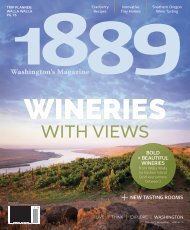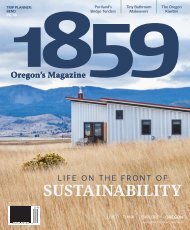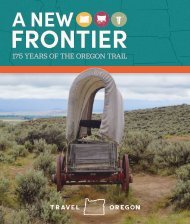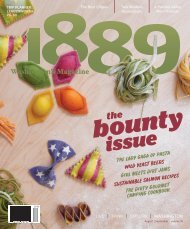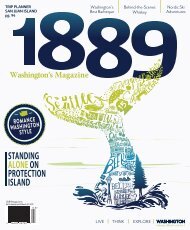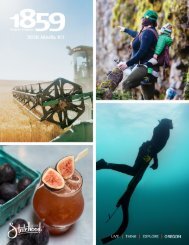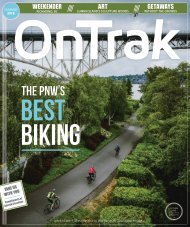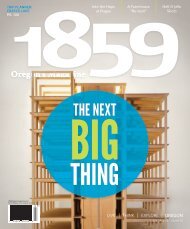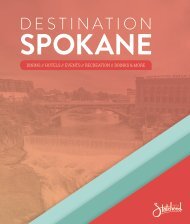Create successful ePaper yourself
Turn your PDF publications into a flip-book with our unique Google optimized e-Paper software.
adventure<br />
zoom ahead another six days in their<br />
journey as I pulled in to Maryhill State<br />
Park for my second night of camping.<br />
I woke the next morning to threatening<br />
skies. Just as it had for Lewis and Clark,<br />
weather was closing in—I needed to<br />
get going.<br />
West of Maryhill, Clark had climbed<br />
to get a view of the dramatic Columbia<br />
Gorge, so that’s what I did. At Columbia<br />
Hills State Park, I hiked high above the<br />
river at Crawford Oaks, and finished just<br />
as the storm hit, bringing 40 mph winds<br />
down the Gorge.<br />
I hurried downriver to Beacon Rock<br />
State Park, mentioned in Clark’s journal<br />
as “the Beaten rock.” I had to agree<br />
with him. Sleet was now pounding the<br />
picturesque 848-foot volcanic monolith.<br />
My plan was to climb the switchbacking<br />
mile-long trail to the top, but with the<br />
storm getting worse every minute, I had<br />
second thoughts.<br />
“Climb it, you wussy!” Lewis said sternly<br />
inside my head. I did as ordered, topping<br />
out thirty minutes later in a raging gale.<br />
The end was in sight. I dried off in the<br />
car and zoomed ahead several more days<br />
to Lewis and Clark’s final challenge, a place<br />
where the explorers nearly died.<br />
As they reached the estuary of the<br />
Columbia, Clark wrote happily, “Ocian in<br />
view. O! The joy!” Then, suddenly, a vicious<br />
winter storm forced them to hunker down<br />
for six precarious days in what Clark<br />
famously called a “dismal little nitch.”<br />
I visited Dismal Nitch (now a National<br />
Park interpretive site) just across the<br />
Columbia from Astoria, Oregon, on<br />
another stormy day.<br />
“It would be distressing to a feeling<br />
person to see our situation,” Clark wrote.<br />
Yes, I felt for them.<br />
As darkness started to descend, I sprinted<br />
for the finish at Cape Disappointment<br />
State Park. It was Nov. 18, 1805—they<br />
had come more than 4,000 miles, and they<br />
finally got a view of the Pacific from the top<br />
of McKenzie Head.<br />
“We made it!” I said to them as I took in<br />
the view.<br />
That night, my expedition done, there<br />
would be no camping. I checked into<br />
the 1890s-era Shelburne Inn in Seaview,<br />
took a hot shower and slipped into a<br />
warm bed.<br />
FROM TOP The Listening Circle in Chief Timothy Park<br />
was designed by Maya Lin. Cape Disappointment State<br />
Park served as Nelson’s final stop.<br />
72 <strong>1889</strong> WASHINGTON’S MAGAZINE FEBRUARY | MARCH <strong>2018</strong>




